A collection of videos relating to the diagnosis and treatment of eye movement disorders. This collection includes many demonstrations of examination techniques.
Dan Gold, D.O., Associate Professor of Neurology, Ophthalmology, Neurosurgery, Otolaryngology - Head & Neck Surgery, Emergency Medicine, and Medicine, The Johns Hopkins School of Medicine.
A collection of videos relating to the diagnosis and treatment of eye movement disorders.
NOVEL: https://novel.utah.edu/
TO
| Title | Description | Type | ||
|---|---|---|---|---|
| 76 |
 |
Hemifacial Spasm | This is a 45-year-old man with intermittent left facial twitching and eyelid closure for the last 6 months. With observation, spontaneous left facial spasms were seen involving the orbicularis oculi and oris muscles. With voluntary contraction of left facial muscles, with smiling for instance, there... | Image/MovingImage |
| 77 |
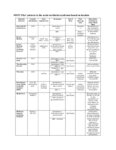 |
HINTS 'Plus' Patterns in the Acute Vestibular Syndrome Based on Location | HINTS ‘Plus' patterns in the acute vestibular syndrome based on location | Text |
| 78 |
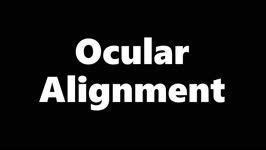 |
How to Measure Ocular Alignment Virtually | Ocular alignment: the alternate cover test can be performed by instructing the patient to hold their head steady, fix their eyes on the camera (or a more distant target - the closer the fixation target, the more of an exodeviation the examiner will see), and use their cell phone (or a spoon) to occl... | Image/MovingImage |
| 79 |
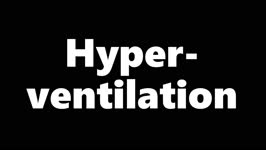 |
Hyperventilation | Hyperventilation: instruct the patient to breathe rapidly in and out of their mouth for 40-60 seconds. Alkalosis and changes in ionized calcium may improve conduction through an affected segment of 8th cranial nerve due to vestibular schwannoma (https://collections.lib.utah.edu/details?id=1213447) o... | Image/MovingImage |
| 80 |
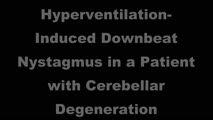 |
Hyperventilation-Induced Downbeat Nystagmus in a Cerebellar Disorder | 𝗢𝗿𝗶𝗴𝗶𝗻𝗮𝗹 𝗗𝗲𝘀𝗰𝗿𝗶𝗽𝘁𝗶𝗼𝗻: This is a 45-year-old woman with a chronic progressive cerebellopathy of unclear etiology (worsening over at least 10 years) characterized by gait and limb ataxia, gaze-evoked nystagmus, saccadic pursuit and vestibulo-ocu... | Image/MovingImage |
| 81 |
 |
The Influence of Convergence on Downbeat Nystagmus | This is a patient presenting with progressive imbalance and oscillopsia over the course of approximately 1 year. On examination, he had cerebellar ataxia in addition to spontaneous downbeat nystagmus (DBN). His downbeat nystagmus increased in lateral and downgaze, which are characteristic features,... | Image/MovingImage |
| 82 |
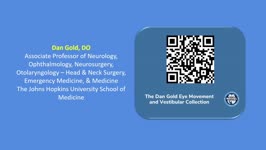 |
Ipsitorsional Quick Phases with Head Tilt in a Normal Subject | This is a demonstration of ocular counterroll, which can be seen when the head is tilted to the right or to the left. For example, when the head is tilted to the right, the top poles of both eyes should rotate toward the left ear to keep the top poles oriented with earth vertical. This is part of ... | Image/MovingImage |
| 83 |
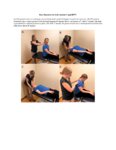 |
Kim Maneuver for Anterior Canal BPPV | The Kim Maneuver for Anterior Canal can be used to treat individuals with anterior canal BPPV. 1. The patient's head is turned 45 degrees towards the unaffected side. 2. The patient transitions into a supine position with the head hanging 30 degrees below the horizon. 3. After two minutes, the head ... | Text |
| 84 |
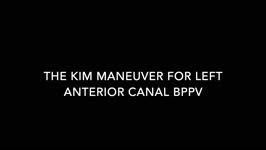 |
Kim Maneuver for Anterior Canal BPPV (Video) | The Kim Maneuver for Anterior Canal can be used to treat individuals with anterior canal BPPV. 1. The patient's head is turned 45 degrees towards the unaffected side. 2. The patient transitions into a supine position with the head hanging 30 degrees below the horizon. 3. After two minutes, the head ... | Image/MovingImage |
| 85 |
 |
The Kim Maneuver for Right Horizontal Cupulolithiasis | The Kim Maneuver is used to treat horizontal canal cupulolithiasis cases where the otoconia may be located on either side of the cupula. 1. The patient begins in a supine position. 2. The patient's head is turned 135 degrees towards the affected side and oscillation is applied to the affected side f... | Text |
| 86 |
 |
The Kim Maneuver for Right Horizontal Cupulolithiasis (Video) | The Kim Maneuver is used to treat horizontal canal cupulolithiasis cases where the otoconia may be located on either side of the cupula. 1. The patient begins in a supine position. 2. The patient's head is turned 135 degrees towards the affected side and oscillation is applied to the affected side f... | Image/MovingImage |
| 87 |
 |
Li Maneuver for Geotropic Right HC-BPPV, Canalithiasis | The Li maneuver is used to treat horizontal canal, canalithiasis. When compared to the Gufoni maneuver, the Li maneuver was as effective to treat HC-BPPV and there was no significant difference between the maneuvers; however, the Li Maneuver may take less time to complete. 1. The patient starts in a... | Text |
| 88 |
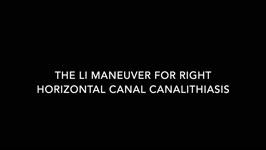 |
Li Maneuver for Geotropic Right HC-BPPV, Canalithiasis (Video) | The Li maneuver is used to treat horizontal canal, canalithiasis. When compared to the Gufoni maneuver, the Li maneuver was as effective to treat HC-BPPV and there was no significant difference between the maneuvers; however, the Li Maneuver may take less time to complete. 1. The patient starts in a... | Image/MovingImage |
| 89 |
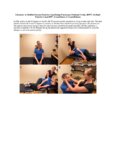 |
Liberatory or Modified Semont, Posterior Canal Benign Paroxysmal Positional Vertigo (BPPV) for Right Posterior Canal BPPV (Canalithiasis or Cupulolithiasis) | Posterior canal (PC) accounts for 70-90% cases of BPPV [1-3] and resolves with canalith repositioning maneuvers 90% of the time [4-13]. The Semont/Liberatory maneuver is considered a gold-standard treatment, with class 1 evidence for use and success rates close to 90% [4-13].The Liberatory maneuver ... | Text |
| 90 |
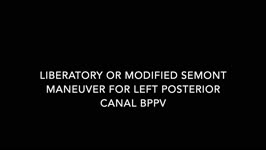 |
Liberatory or Modified Semont, Posterior Canal Benign Paroxysmal Positional Vertigo (BPPV) for Right Posterior Canal BPPV (Canalithiasis or Cupulolithiasis) | Posterior canal (PC) accounts for 70-90% cases of BPPV [1-3] and resolves with canalith repositioning maneuvers 90% of the time [4-13]. The Semont/Liberatory maneuver is considered a gold-standard treatment, with class 1 evidence for use and success rates close to 90% [4-13].The Liberatory maneuver ... | Image/MovingImage |
| 91 |
 |
Light Near Dissociation in a Tonic Pupil | 𝗢𝗿𝗶𝗴𝗶𝗻𝗮𝗹 𝗗𝗲𝘀𝗰𝗿𝗶𝗽𝘁𝗶𝗼𝗻: This is a 65-year-old woman who noticed difficulty reading and heightened sensitivity to lights OS for the last 6 months. On examination, there was mydriasis OS of about 6 mm (3 mm OD). The left (mydriatic) pupil constric... | Image/MovingImage |
| 92 |
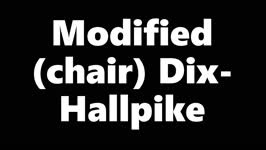 |
Modified (Chair) Dix-Hallpike | The safety of the patient should be prioritized when completing this test virtually, and the examiner should avoid putting the patient in a position where a fall may occur. Modified (chair) Dix-Hallpike:(1) this test can be used for patients who may not be able to safely undertake the traditional Di... | Image/MovingImage |
| 93 |
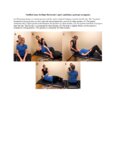 |
Modified Zuma for Right Horizontal Canal Canalithiasis (Geotropic Nystagmus) | The Modified Zuma maneuver is used to treat horizontal canal canalithiasis (geotropic nystagmus. 1. Patient begins in a seated position. 2. The patient's head is rotated 45 degrees towards the unaffected side. 3. The patient transitions to lying on their affected side and maintains this position for... | Text |
| 94 |
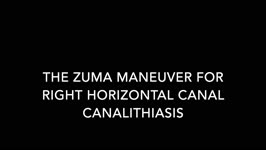 |
Modified Zuma for Right Horizontal Canal Canalithiasis (Geotropic Nystagmus) (Video) | The Modified Zuma maneuver is used to treat horizontal canal canalithiasis (geotropic nystagmus. 1. Patient begins in a seated position. 2. The patient's head is rotated 45 degrees towards the unaffected side. 3. The patient transitions to lying on their affected side and maintains this position for... | Image/MovingImage |
| 95 |
 |
The Most Common Audiovestibular Laboratory Tests, and the Specific Conditions in Which They May Assist in Making or Supporting the Diagnosis | VN = vestibular neuritis; VM = vestibular migraine; VP = vestibular paroxysmia; vHIT = video head impulse test; VNG = video-nystagmography; ENG = electronystagmography; VOG = video-oculography; VEMPs = vestibular evoked myogenic potentials; SCDS = superior canal dehiscence syndrome; BPPV = benign pa... | Text |
| 96 |
 |
The Most Common Vestibular Conditions Categorized by Timing and Triggers, with Specific Historical Features that Should be Sought for Each (Adapted from Approach to the Ocular Motor and Vestibular History and Examination) | Adapted from https://collections.lib.utah.edu/ark:/87278/s64x9bq1 | Text |
| 97 |
 |
The Most Common Vestibular Conditions Categorized by Timing and Triggers, with Specific Ocular Motor and Vestibular Features that Should be Sought for Each | HINTS+ = Head Impulse, Nystagmus, Test of Skew, ‘Plus' bedside assessment of auditory function; HIT = head impulse test; NP = nerve palsy; BPPV = benign paroxysmal positional vertigo; SCDS = superior canal dehiscence syndrome; BVL = bilateral vestibular loss; PPPD = persistent postural perceptual ... | Text |
| 98 |
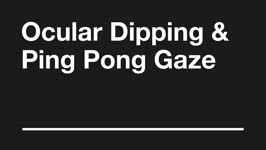 |
Ocular Dipping and Ping-pong Gaze Due to Bi-hemispheric Strokes | This is a 51-year-old man presenting with hypertensive left thalamic intracerebral hemorrhage and intraventricular hemorrhage, with course complicated by multifocal supratentorial ischemic strokes. He developed abnormal movements characterized by slow, conjugate, horizontal deviations, consistent wi... | Image/MovingImage |
| 99 |
 |
Ocular Motor Signs in Brainstem Demyelinating Disease - Spontaneous Upbeat, Vertical Gaze-Evoked Nystagmus, Slow Saccades, Bilateral Vestibular Loss, INOs | 𝗢𝗿𝗶𝗴𝗶𝗻𝗮𝗹 𝗗𝗲𝘀𝗰𝗿𝗶𝗽𝘁𝗶𝗼𝗻: This is a 25-year-old woman who presented with painful vision loss bilaterally two years prior to this video recording, which was diagnosed as optic neuritis. Months later, she experienced oscillopsia and binocular horizo... | Image/MovingImage |
| 100 |
 |
Ocular Motor Signs of Cerebellar Ataxia - Gaze-Evoked Nystagmus, Saccadic Pursuit, and VOR Supression | 𝗢𝗿𝗶𝗴𝗶𝗻𝗮𝗹 𝗗𝗲𝘀𝗰𝗿𝗶𝗽𝘁𝗶𝗼𝗻: This is a 30-year-old woman with a several year long history of imbalance due to cerebellar ataxia of unclear etiology. Seen in this video are common ocular motor signs in patients with advanced cerebellar dysfunction inc... | Image/MovingImage |
